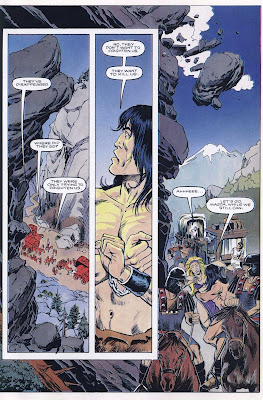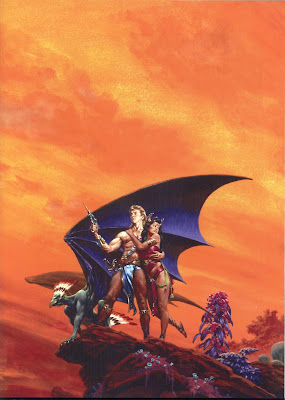1 / 5 Stars
[Laser Books was an imprint of the romance novel publisher Harlequin Books. Laser released three novels a month, for a total of 57 novels, during 1975 – 1977 before discontinuing the imprint. The books all were 190 pages in length, edited for content, and required to have a simple vocabulary, a male protagonist, and plots that concluded on a positive, optimistic note.]
I usually don’t read entries in the Laser Books imprint, but I was motivated to get this particular volume due to the favorable impression I got from Hensley’s short story ‘In Dark Places’ in the 1973 sf anthology Future City, edited by Roger Elwood.
‘The Black Roads’ is set in a near-future US that has fragmented due to decades of global famine, economic crises, small-scale nuclear wars, and epidemics. The major power in the land is the Roadmen, an authoritarian polity who maintain the superhighway system that crisscrosses the continental US. Within the fences and barbed wire that segregate the highways from the rest of the landscape, there is some degree of safety and material abundance, provided one observes the laws and regulations of the Roadmen.
As the novel opens, Sam Church – a former Roadman – has escaped from prison and is on the run, accompanied by a fellow prisoner named Doc. Church was jailed for reading forbidden books, and hopes to travel across the country to the location of Central Control, a redoubt where sanctuary can be gained.
The territories through which Sam Church and Doc must travel are filled with dangers, not just from the surveillance helicopters and checkpoints of the Roadmen. Tribes of savages and marauders, including cannibals, fight over the dwindling resources still left in the ruined cities and towns of the US. If Sam and Doc are to survive their journey, they must travel on the highways systems – even if so doing risks capture by the Roadmen…..
‘The Black Roads’ was a disappointment. While some of the Laser Books included worthwhile early-career novels from writers (like K. W. Jeter, Gordon Eklund, and George Zebrowski) that would go on to become well-known sf authors, this particular entry is a dud.
The book reads like an unedited first draft……it’s filled with stilted prose, awkward syntax, and passages of dialogue that are wincingly bad. Although the book’s plot is essentially one long Chase Sequence, there is little in the way of suspense or momentum. Various sci-fi tropes are worked in – including a telepathic Mutant Queen – but they seem contrived and perfunctory.
The final pages of ‘The Black Roads’ exhibit some degree of worthiness, as the lead characters stumble across some revelations about the world ruled by the Roadmen. But I finished the book thinking that it was a mediocre derivative of the classic Harlan Ellison short story ‘Along the Scenic Route’.
My verdict ? You’re better off reading Ellison's short story, and staying away from ‘The Black Roads’.






























































































